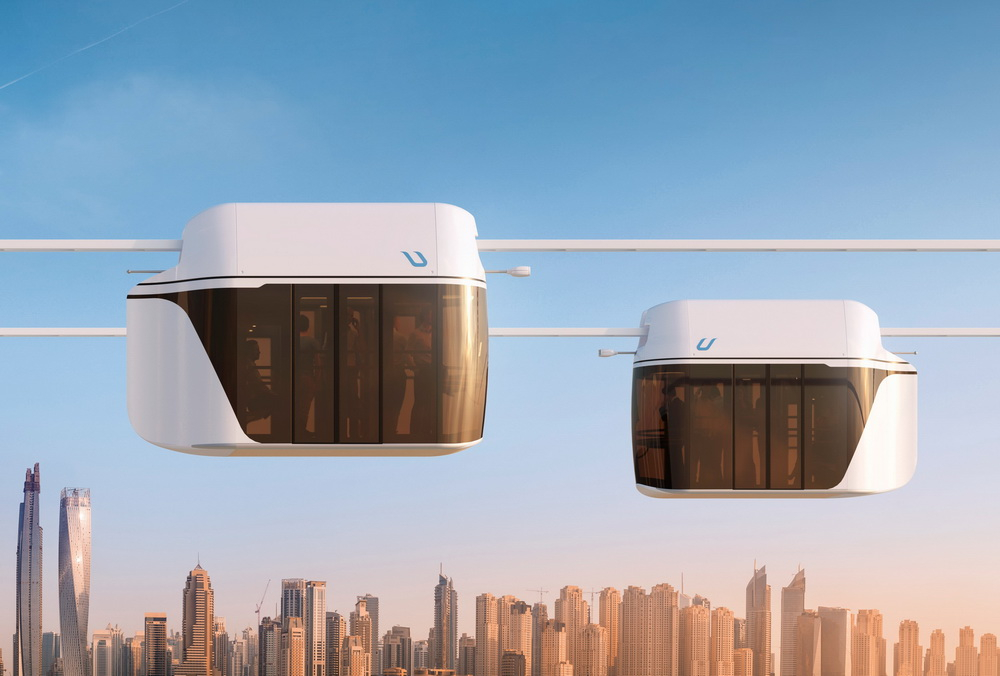Unitsky String Technologies Inc. Engineers Have Successfully Tested a Deformation Tube for uPod U4-212-01

The experiments made it possible to determine the optimal geometric parameters, including the optimal thickness of the deformation tube, and to confirm the initial calculations of the designers. After several operations with various samples, experimental data were obtained, which will be used for further calculation and designing of this type of structures.
Taking into account the results obtained, the deformation tubes will be used for the emergency towing device, including those to prevent excessive loads on the structure and passengers, theoretically possible in the event of a collision of vehicles at speeds over 10 km/h.
An intelligent control system should prevent the occurrence of such situations, however, designers lay down several levels of safety systems. This not only meets international requirements in this area, but often exceeds them, which makes the trip as comfortable and reliable as possible for passengers.
How did the tests go?
Several samples of deformation tubes with different wall thicknesses were used for testing.
The first sample was installed in a testing machine and loaded with a certain force and speed. Tube exposure under load was carried out for 10 minutes. No shear and visible deformations appeared during this time, while the load on the sample increased.
The sample did not confirm its calculated parameters in the loading machine under a certain force, therefore, the same tests were carried out using samples with other wall thicknesses — until a sample with optimal parameters was found.
— At a certain point, we managed to achieve the desired result and confirm the geometric parameters originally laid down by the designers, — said Andrey Shpakovsky, an engineer at the Unitsky String Technologies bench testing bureau.

Why is a deformation tube needed?
— The deformation tube is one of the important components in the emergency towing device. It absorbs the impact energy and slows down the speed of the vehicle in the event of an emergency collision. This makes it possible to avoid serious damage, both to the structures of the vehicle, and to passengers and cargo inside, — said Evgeny Chernikov, company's lead design engineer.
However, according to Evgeny, such emergencies are extremely unlikely due to the intelligent control system, as well as the availability of machine vision and other electronic fillings in unimobiles. But the designers must envisage everything — even the most, at first glance, incredible scenarios in order to protect passengers as much as possible.
The design checked as a result of the tests will be used for the emergency towing device at Unibus U4-212-01, which is currently in the process of production.
Unibus U4-212-01 is a new passenger vehicle in the line of unimobiles (uPod), designed for traffic on urban and suburban routes. It can accelerate up to 150 km/h and carry up to 25 passengers. In many ways, it will be a new and one of the most advanced vehicles for servicing passengers.
The emergency towing device is one of the subsystems of the complex, which makes it easy to evacuate a failed unimobile (uPod) with the help of another vehicle located on the line. Due to such a device, string transport can move in a rigid coupling and not create traffic jams, the regularity of traffic is preserved, and passengers will not get stuck at an altitude.
The basis for the safety of uSky transport solutions is movement on the "second level" along a clearly fixed track, which excludes the possibility of collisions with other vehicles and other objects outside the complex.
Watch how the emergency towing device works via the link.
More news

Opinion
26 January 2023
Solutions for Improving the Aerodynamics of uPods Are Presented
“Innovative Transport” has published an article on the aerodynamics of uST Transport. The article in detail describes a uFlash – a high-speed uPod with unique aerodynamic characteristics.

News
1 July 2024
UST Inc. Is Working on the Transport & Infrastructure Solution for a South Asian Country
The uST Solution should provide efficient transportation to the natural attraction and boost its tourist appeal.

News
28 December 2024
The Executives of UST Inc. Spoke about the Company's Performance in 2024
The General Designer and General Director of Unitsky String Technologies Inc. summed up the results of the company's activities in 2024.



